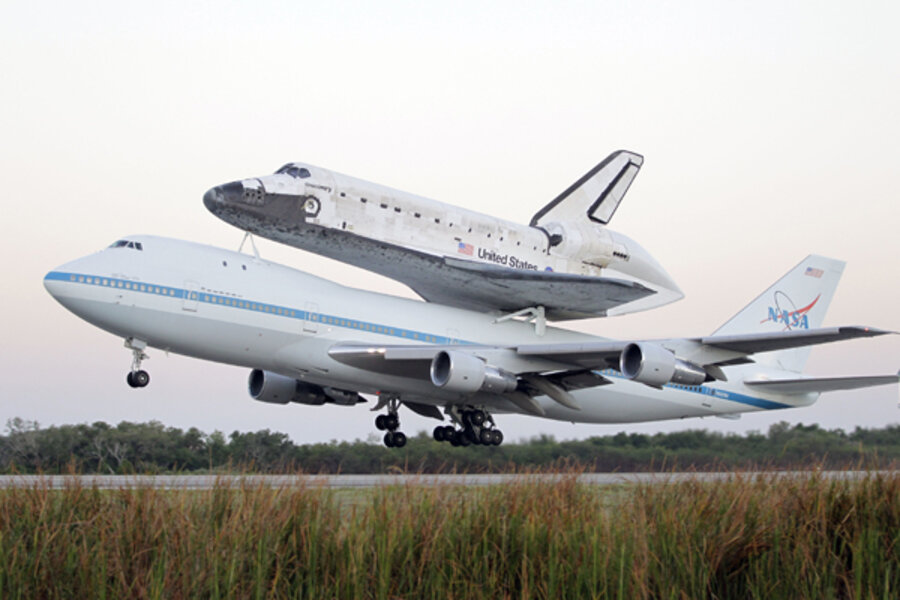Space shuttle Discovery begins final flight
Loading...
| Cape Canaveral, Florida
After three decades of space service, NASA's oldest and most traveled shuttle, Discovery, began its new life as a museum relic Tuesday with one final takeoff.
Discovery departed Florida's Kennedy Space Center at daybreak Tuesday aboard a modified jumbo jet bound for Washington, where it will become a Smithsonian exhibit.
Nearly 2,000 people — former shuttle workers, VIPs, tourists and journalists — gathered along the old shuttle landing strip to see Discovery off. A cheer went up as the plane taxied down the runway and soared into a clear sky.
The plane and shuttle headed south and made one last flight over the beaches of Cape Canaveral — thousands jammed the shore for a glimpse of Discovery — then returned to the space center in a final salute. Cheers erupted once more as the pair came in low over the runway it had left 20 minutes earlier and finally turned toward the north.
A similar flyover was planned over the monuments in the nation's capital, later in the morning.
Discovery — the fleet leader with 39 orbital missions — is the first of the three retired space shuttles to head to a museum. It will go on display at Dulles International Airport in Virginia, taking the place of the shuttle prototype Enterprise. The Enterprise will go to New York City.
Endeavour will head to Los Angeles this fall. Atlantis will remain at Kennedy.
NASA ended the shuttle program last summer after a 30-year run to focus on destinations beyond low-Earth orbit. Private U.S. companies hope to pick up the slack, beginning with space station cargo and then, hopefully, astronauts. The first commercial cargo run, by Space Exploration Technologies Corp., is set to take place in just another few weeks.
For at least the next three to five years — until commercial passenger craft are available in the United States — NASA astronauts will have to hitch multimillion-dollar rides on Russian Soyuz capsules to get to the International Space Station.
___
Online:
NASA: http://www.nasa.gov/mission_pages/shuttle/main/index.html







